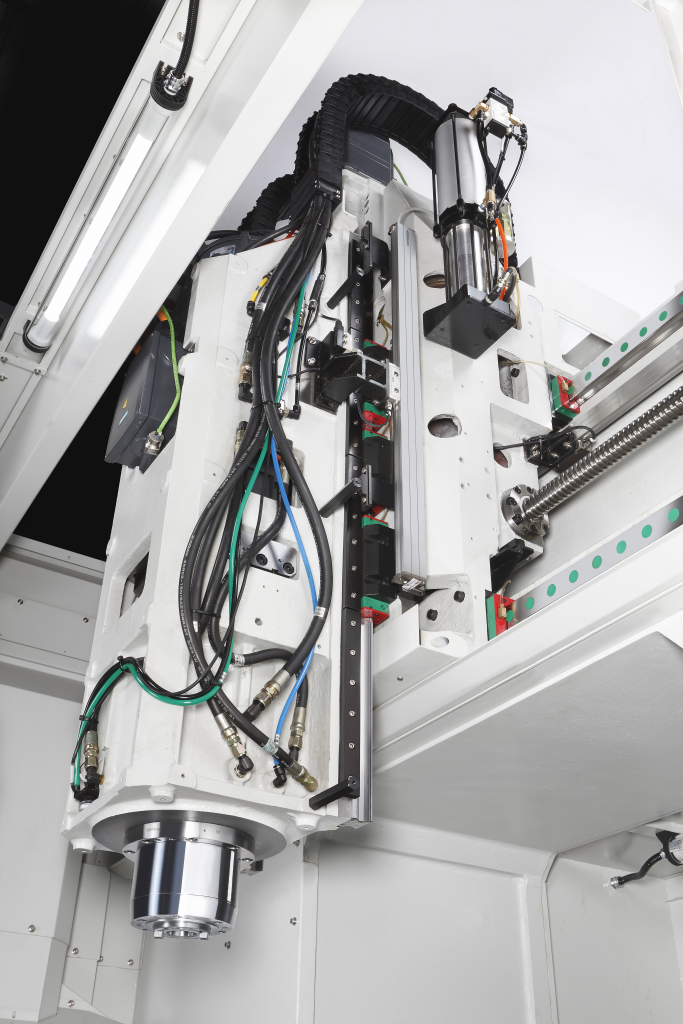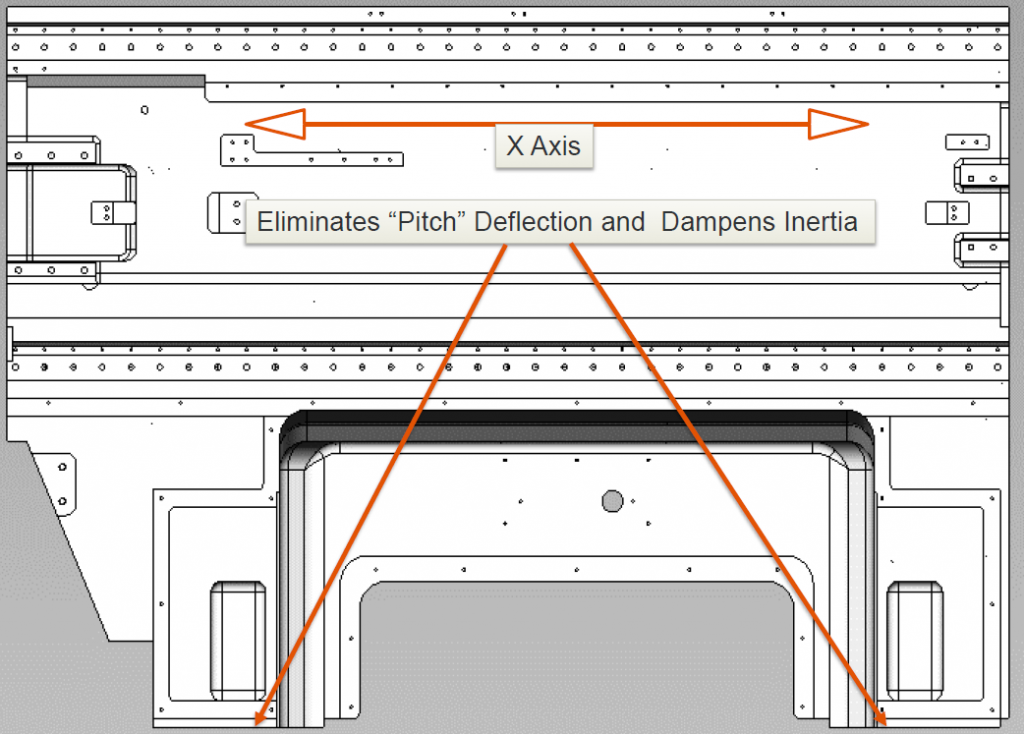The basic double-column design is nothing new.
Searching to increase work envelopes, many companies have produced machinery with this design over the years. Large and heavy, the basic design increases the size capabilities of a CNC machine to perform large workpiece machining by spanning the table with the use of two columns and a cross rail sitting on the columns to support the spindle head and one axis. This leaves a single axis to carry the weight of the part. The other traversing axis no longer needs a large motor or mechanical structure to carry the part’s weight, reducing costs and making the large work envelope CNC machine more affordable.
With larger parts comes the need for high material removal rates. Utilizing large tooling, such as CAT 50 or HSK 100, the need could be met if the machine was rigid and stable. The machines grew in weight to support this, and spindles were large with multiple gears and low maximum RPM’s available. Advancements in mechanical design were necessary to maintain the rigidity with less mass and increase material removal rates with higher RPM spindles.
Those advancements are the highlights of the design of the Takumi H series CNC machines. The Takumi double column CNC mill has been designed to support the latest in tool technology, material removal strategies of modern CAM systems, and the advanced CNC control features included in the FANUC 31i-MB CNC control package, which means it increases profitability for shops that are making large-sized parts.
Due to the changes in mechanical design and tooling, certain benefits inherent to the design of double-column CNC machines became evident, when compared to “C-Frame” CNC machines. Double column machines are heavier and vibration has less effect on part finish. Faster axis motion is possible because the geometry of the Z-axis is not affected by the weight inertia of the large table loads.
The table on the Takumi CNC double column machining center can be better supported by wider placement of the ways because of the large width of the base, which eliminates table pitch that is found on C-frame CNC machines.
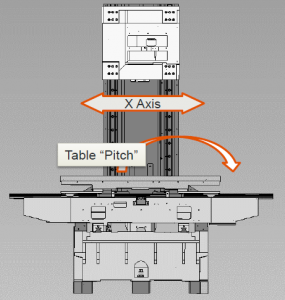
Due to the design of the double-column machine, the table can be lower, and the machinist has easy access to the spindle since one axis is now traversing overhead. Wide access doors and well-designed, full enclosures make part and tool loading easier from floor level.
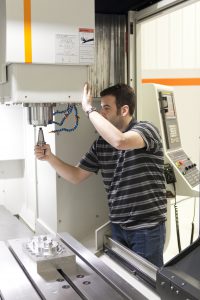
Our design modifies the bridge style machine, with separate columns and cross rail, to a single piece column casting. The dual contact areas with the one-piece base dampens vibration and inertia and eliminates pitch. Large linear rails replace the box ways and large diameter ball screws with fine lead pitch are coupled with high RPM axis motors, to increase the cutting feeds and rapids available for advanced cutting techniques, and increasing accuracy.
The geometry of the machine is stable with a double-column, compared to the single-column design. Small changes in leveling due to settling or environmental changes are amplified by the C-frame column. When the column moves, the Z-axis geometry changes, which causes accuracy and straightness problems. Since the double-column geometry is established when the CNC machine is built, it isn’t affected by changes in leveling.
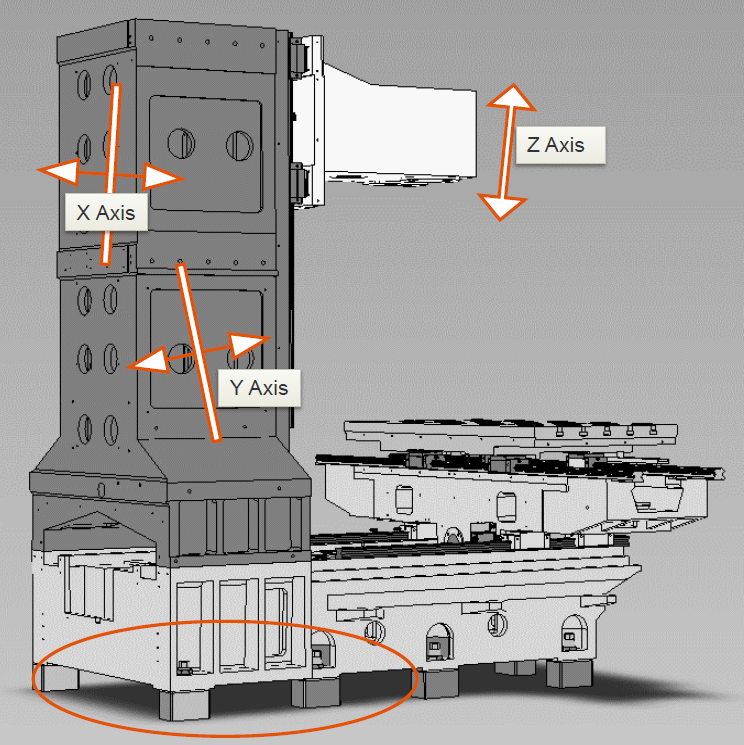
To increase the rigidity of the spindle head, we enhanced the design of the cross rail by offsetting the linear guides into a ladder design. This prevents deflection of the head during cutting and decreases the distance from the spindle centerline to the supporting structure. An in-line spindle configuration ensures maximum efficiency of the spindle motor. With thermal jacketing of the spindle and motor, constant temperature is maintained via an oil-type cooler, eliminating thermal deformation of the head casting.
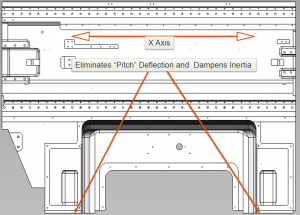
Equipped with a 15,000 RPM Big Plus® 40 taper spindle, linear scales on all axes and milling feeds up to 787 IPM, the Takumi design enhancements make full use of the work envelope advantages of this style of double column CNC machine, and improves on the original bridge design for better accuracy, surface finish and productivity.
